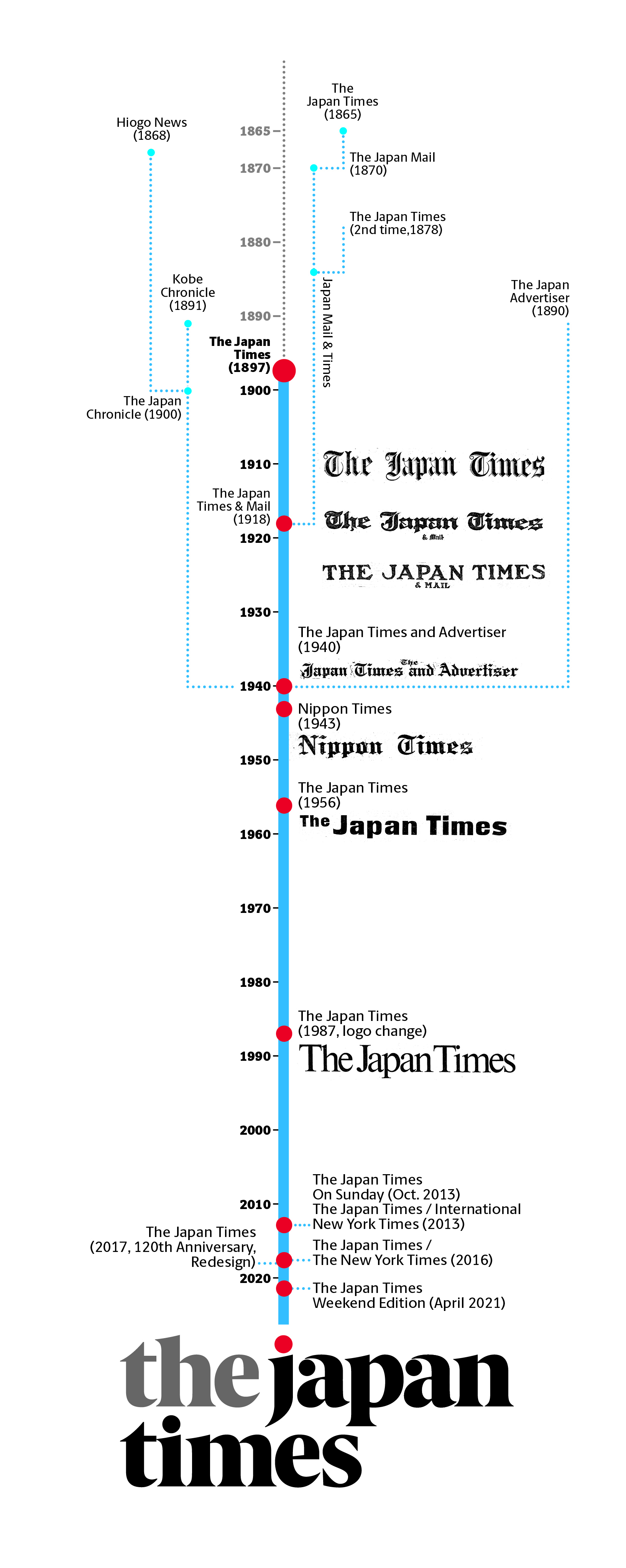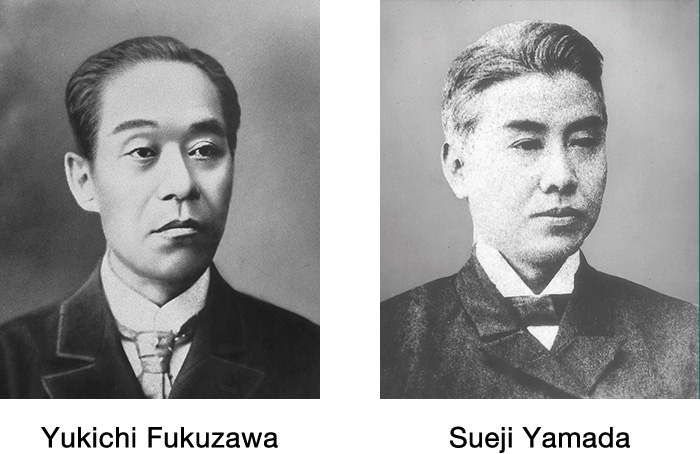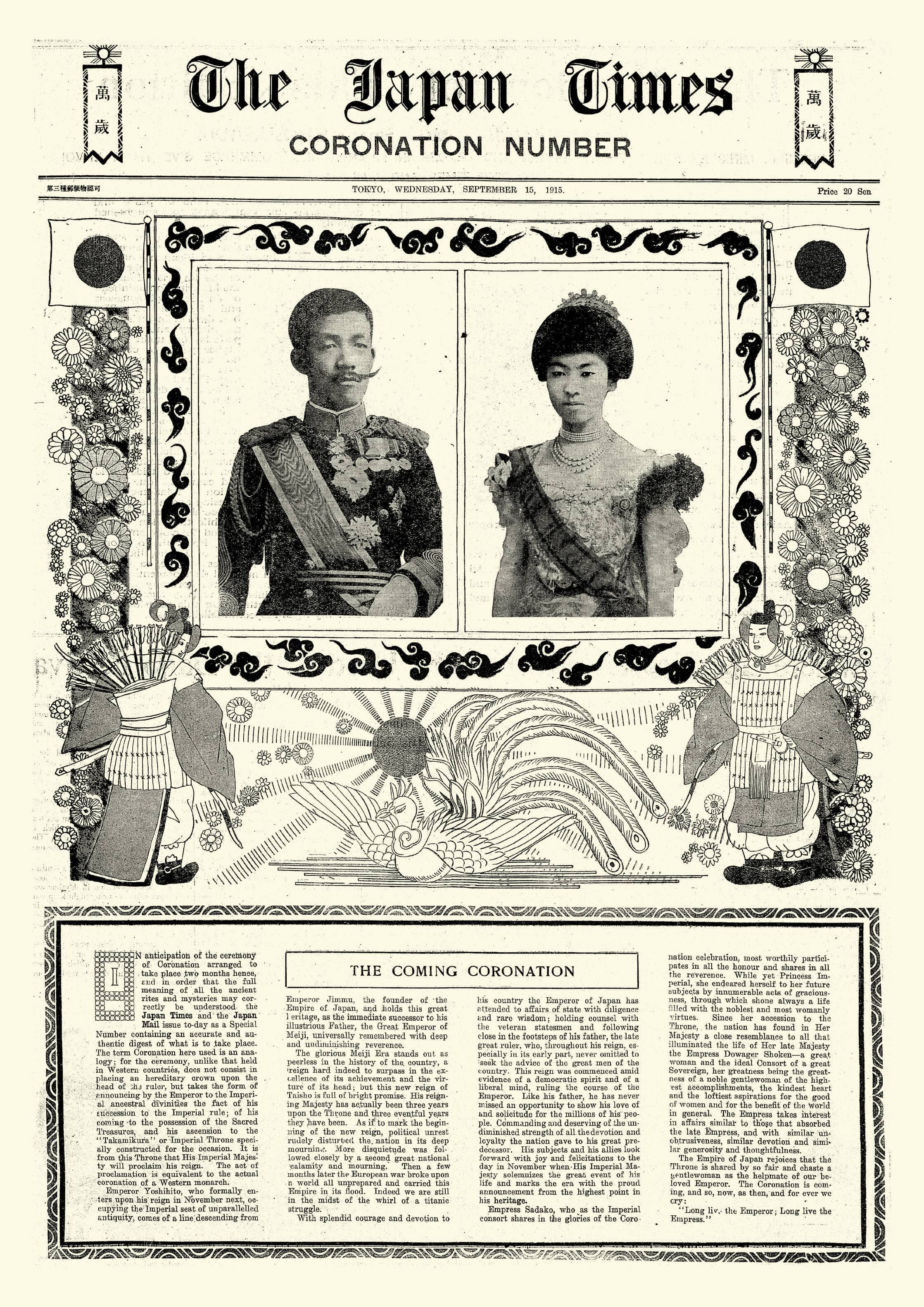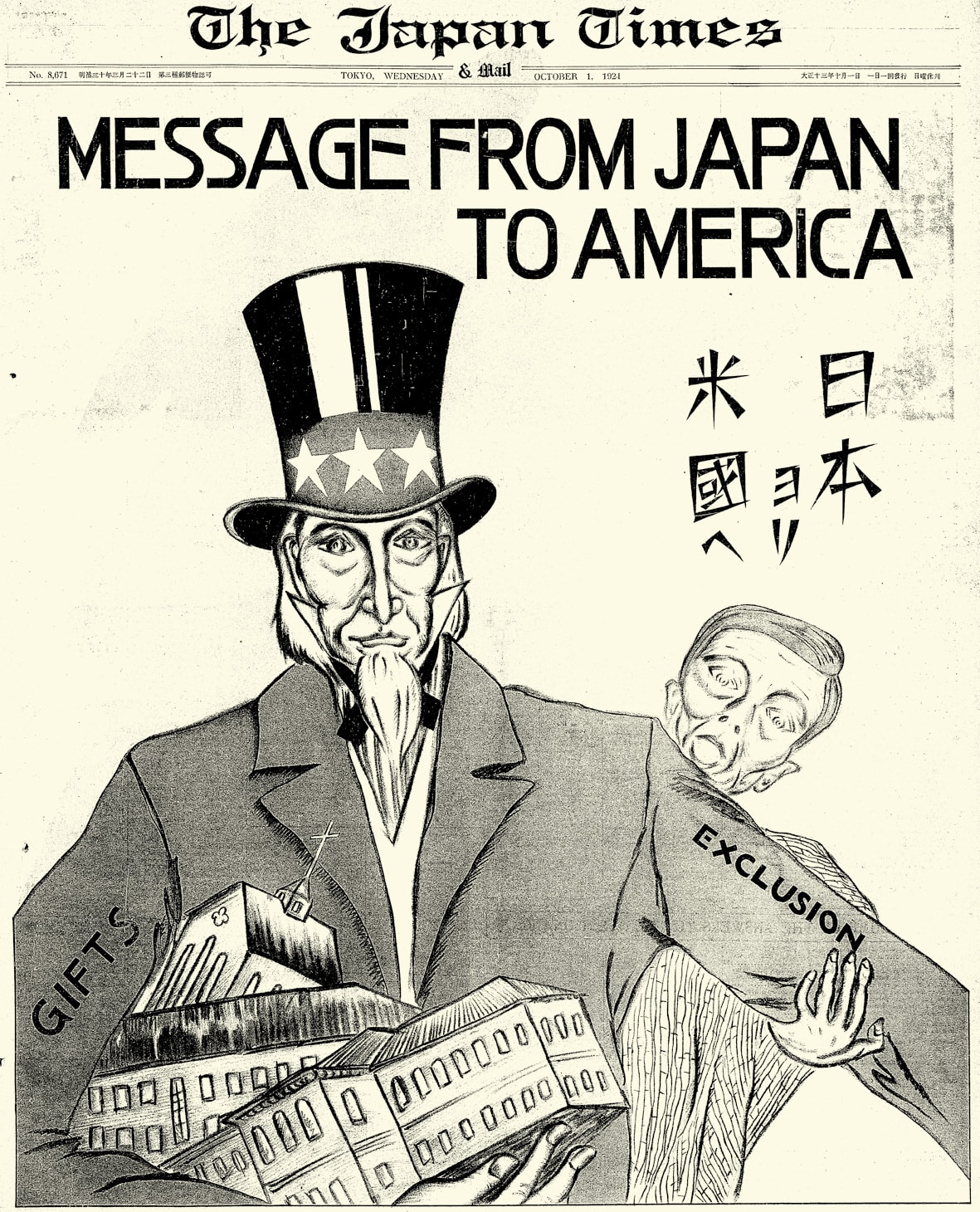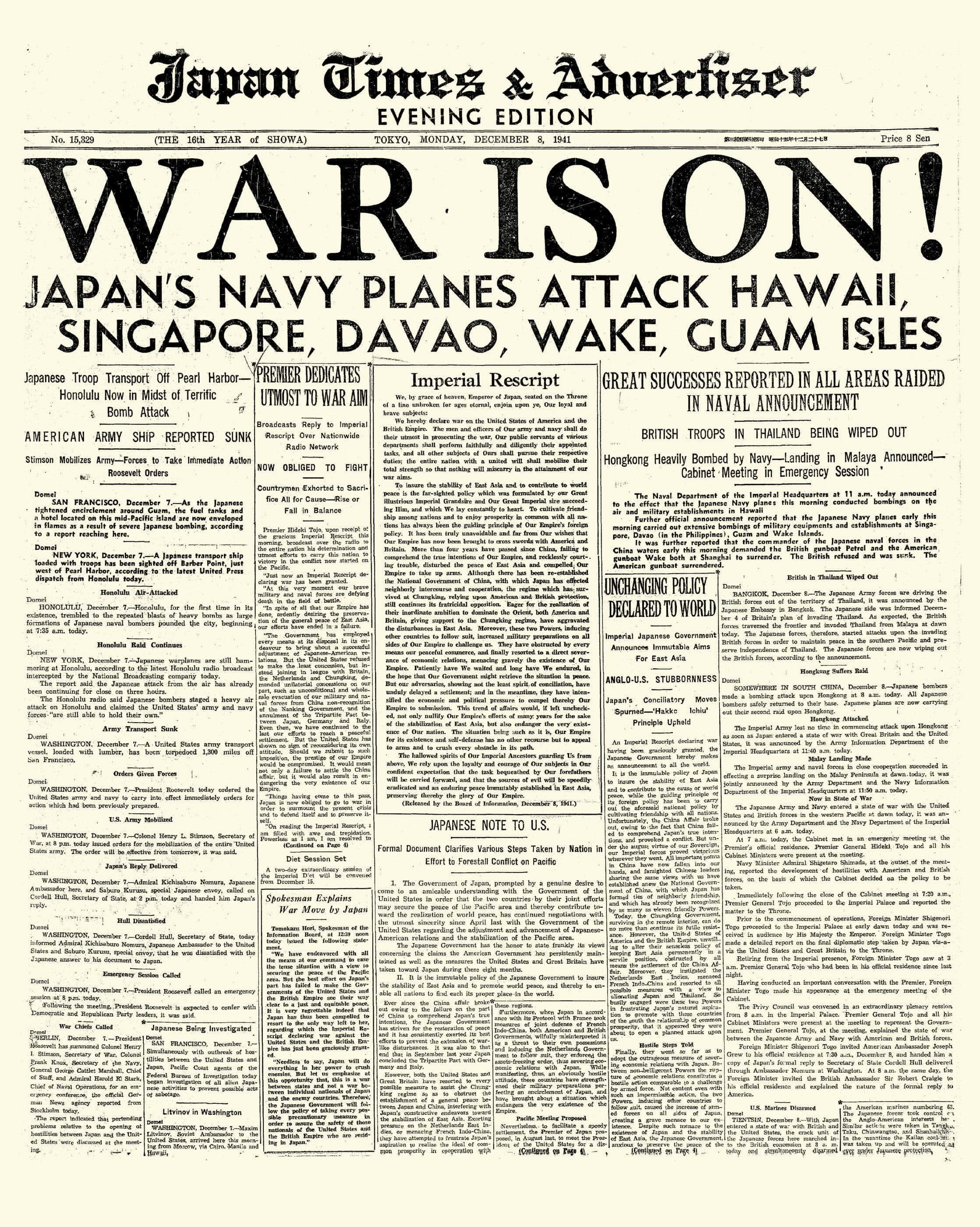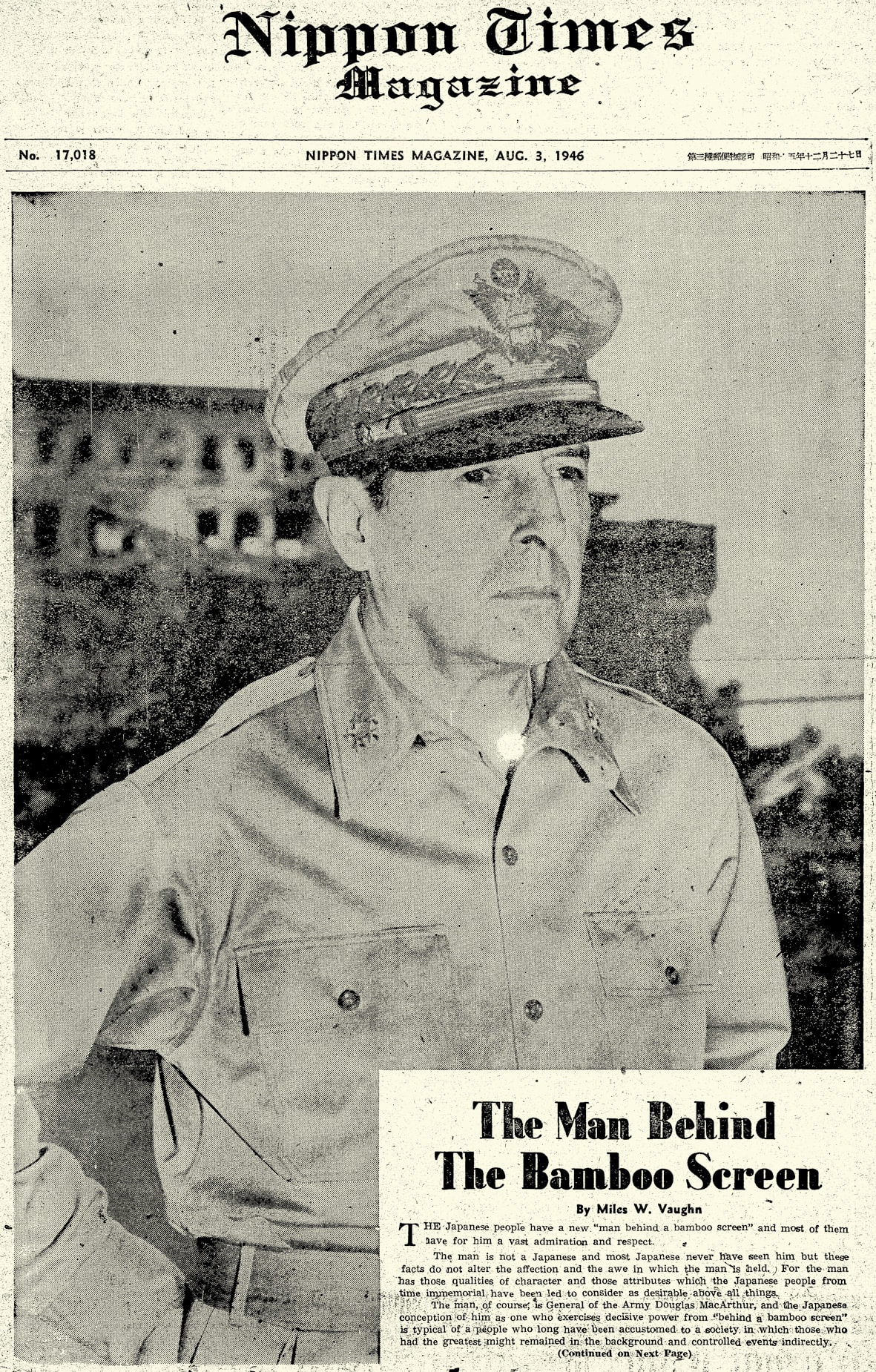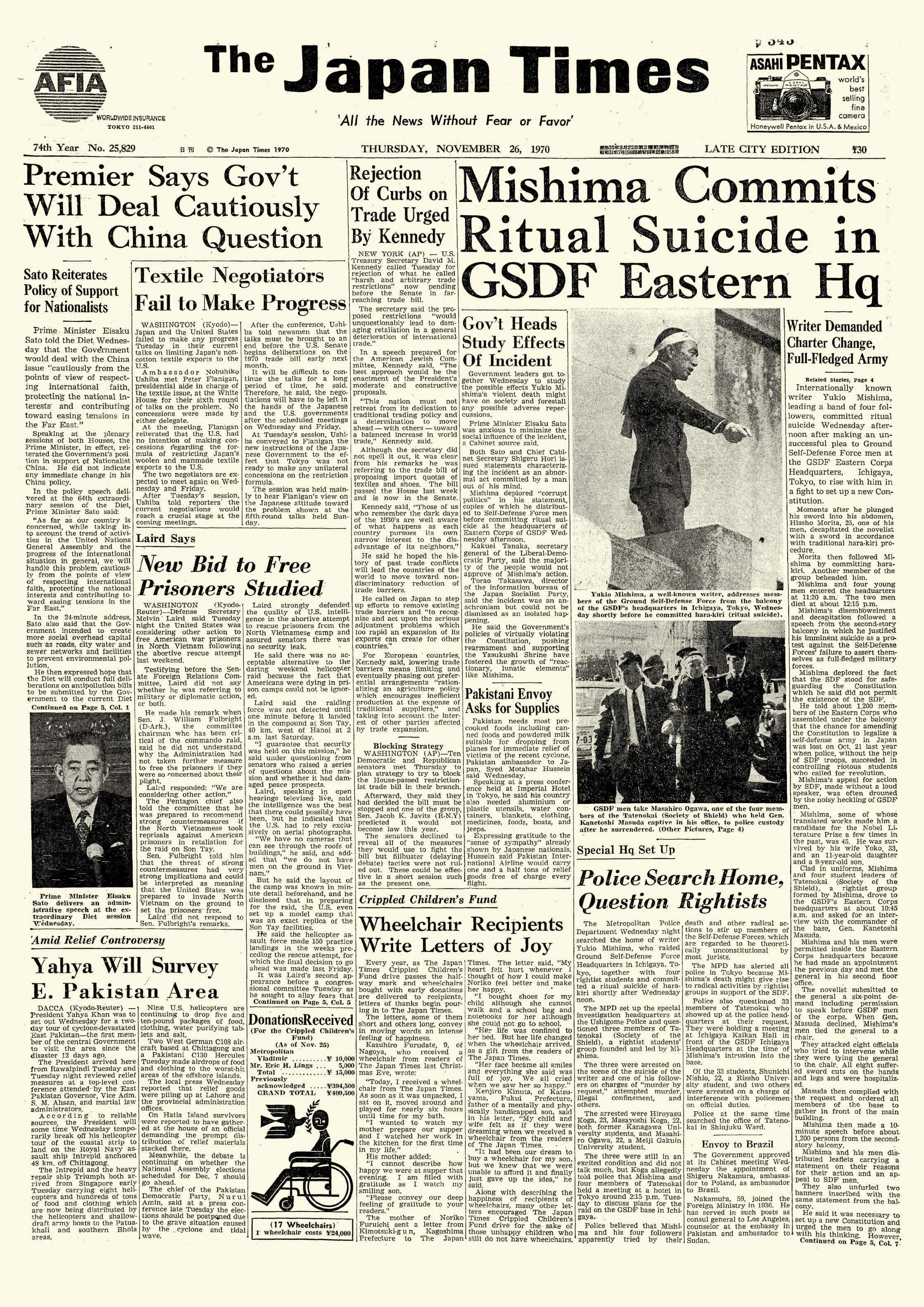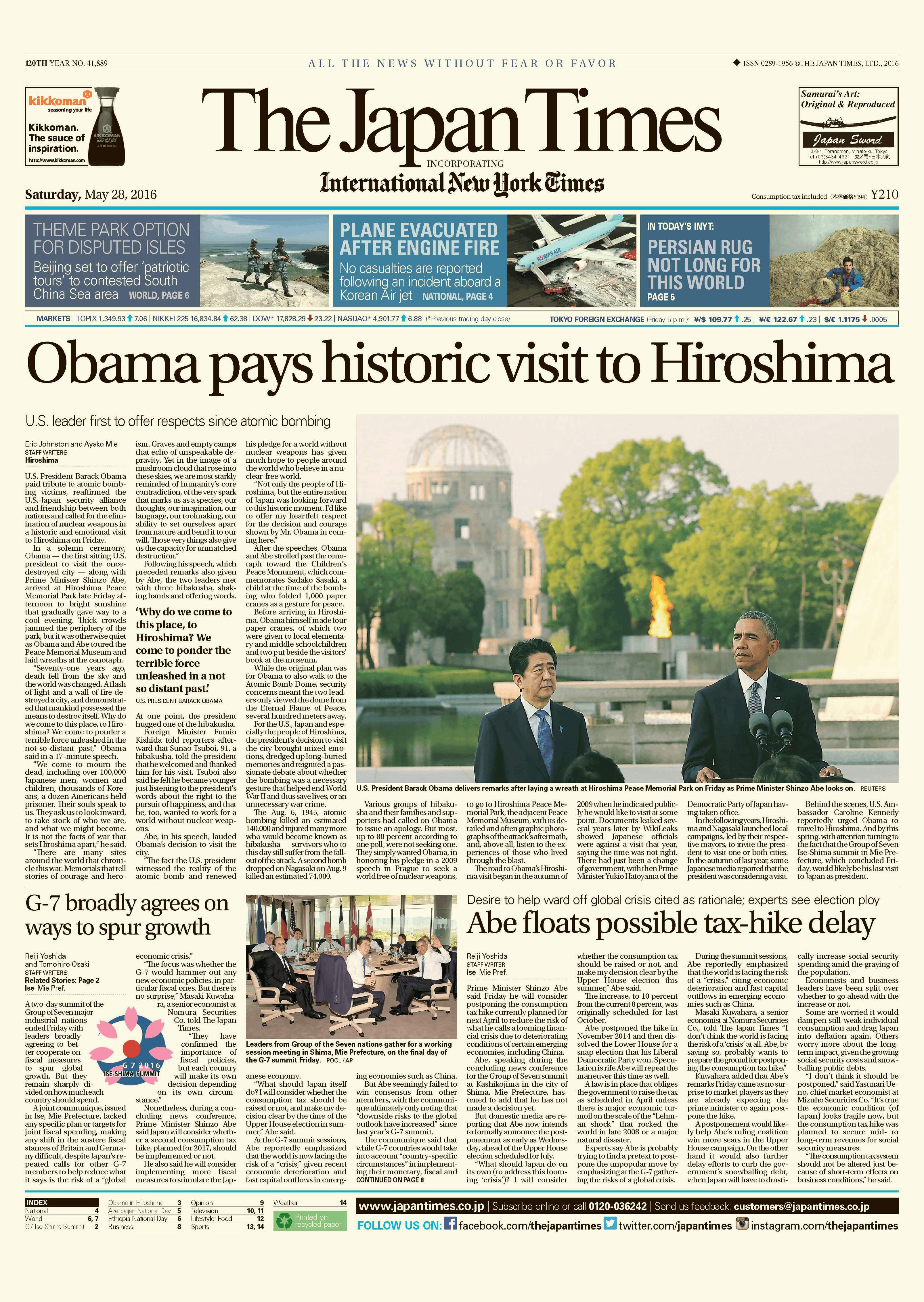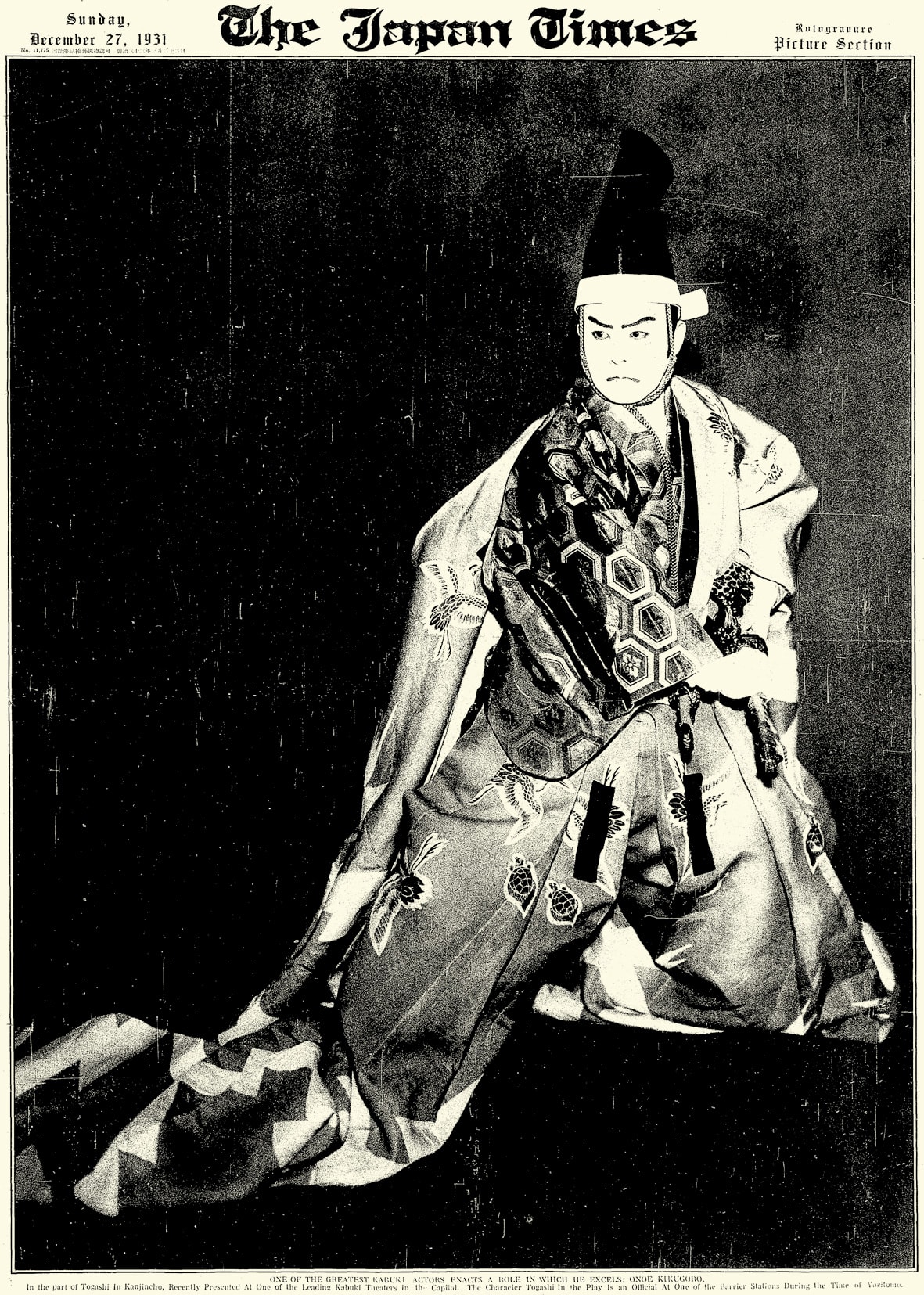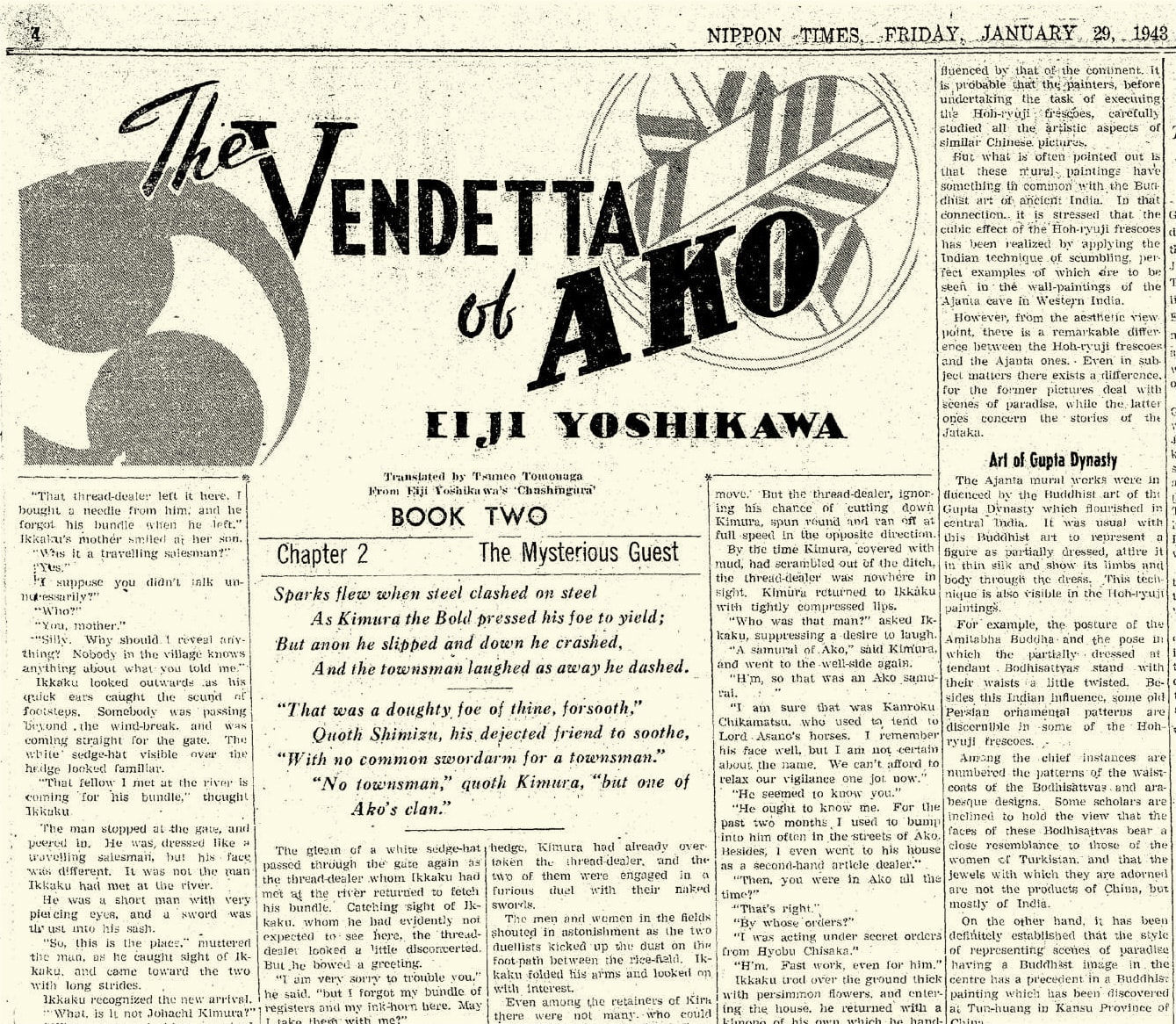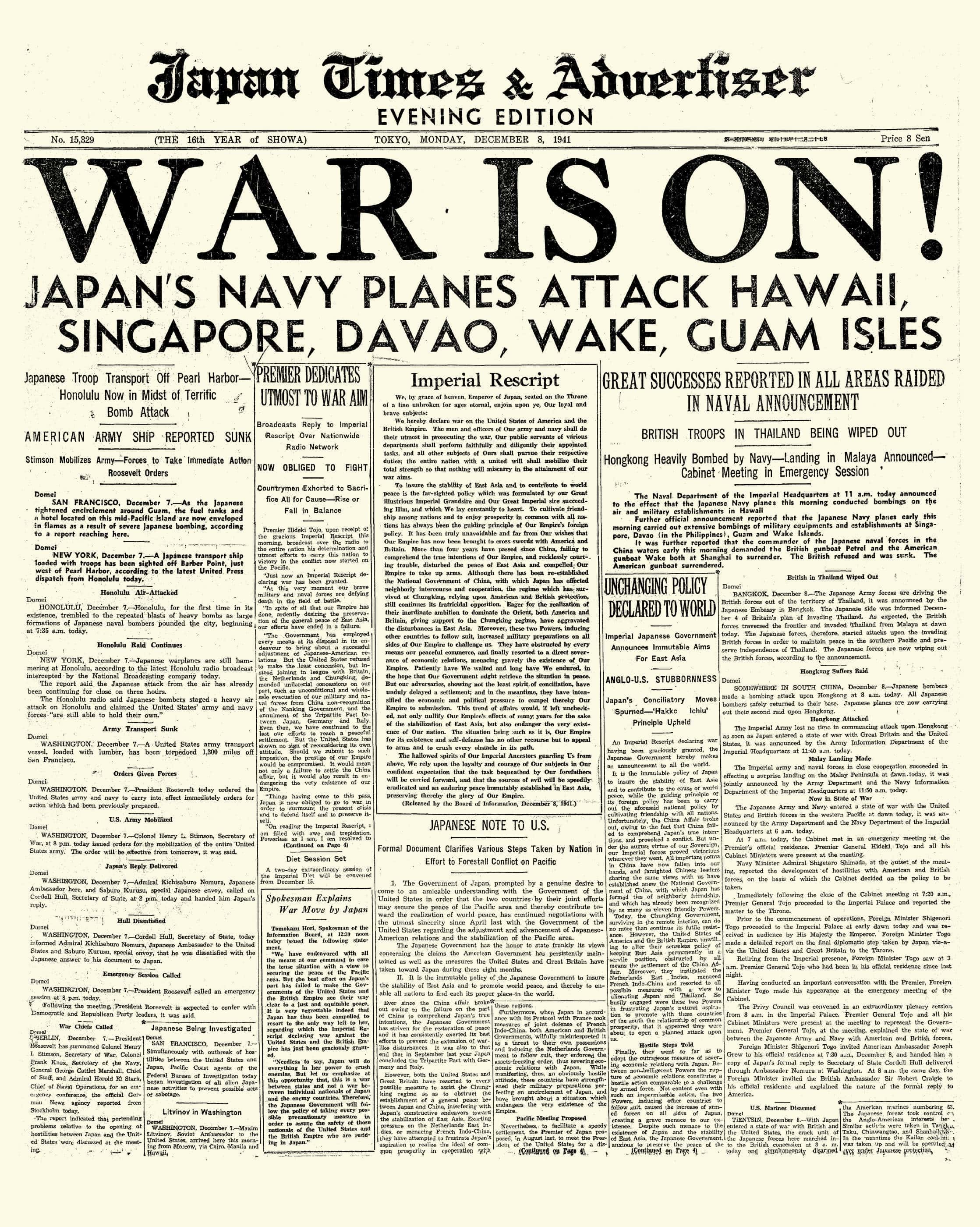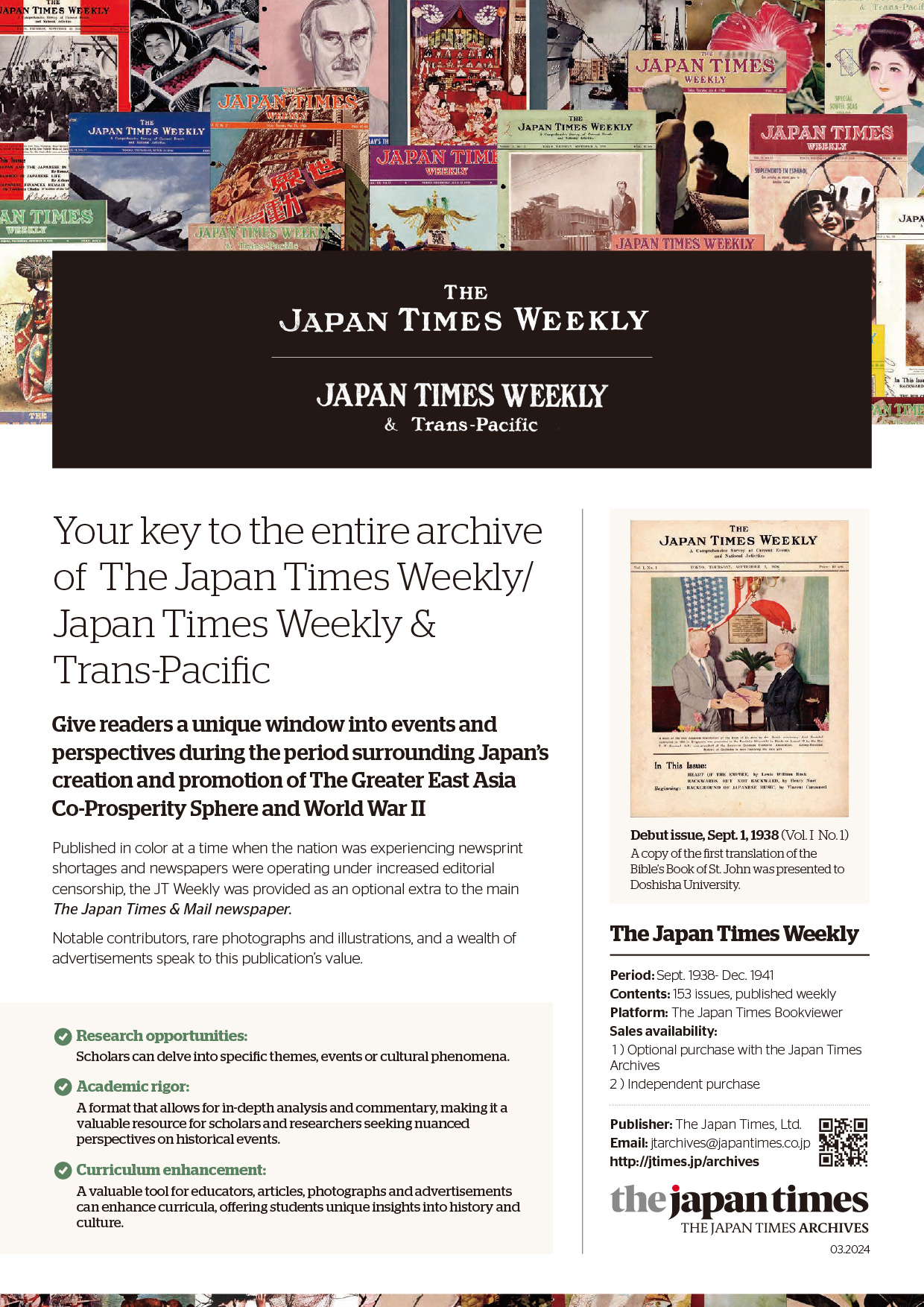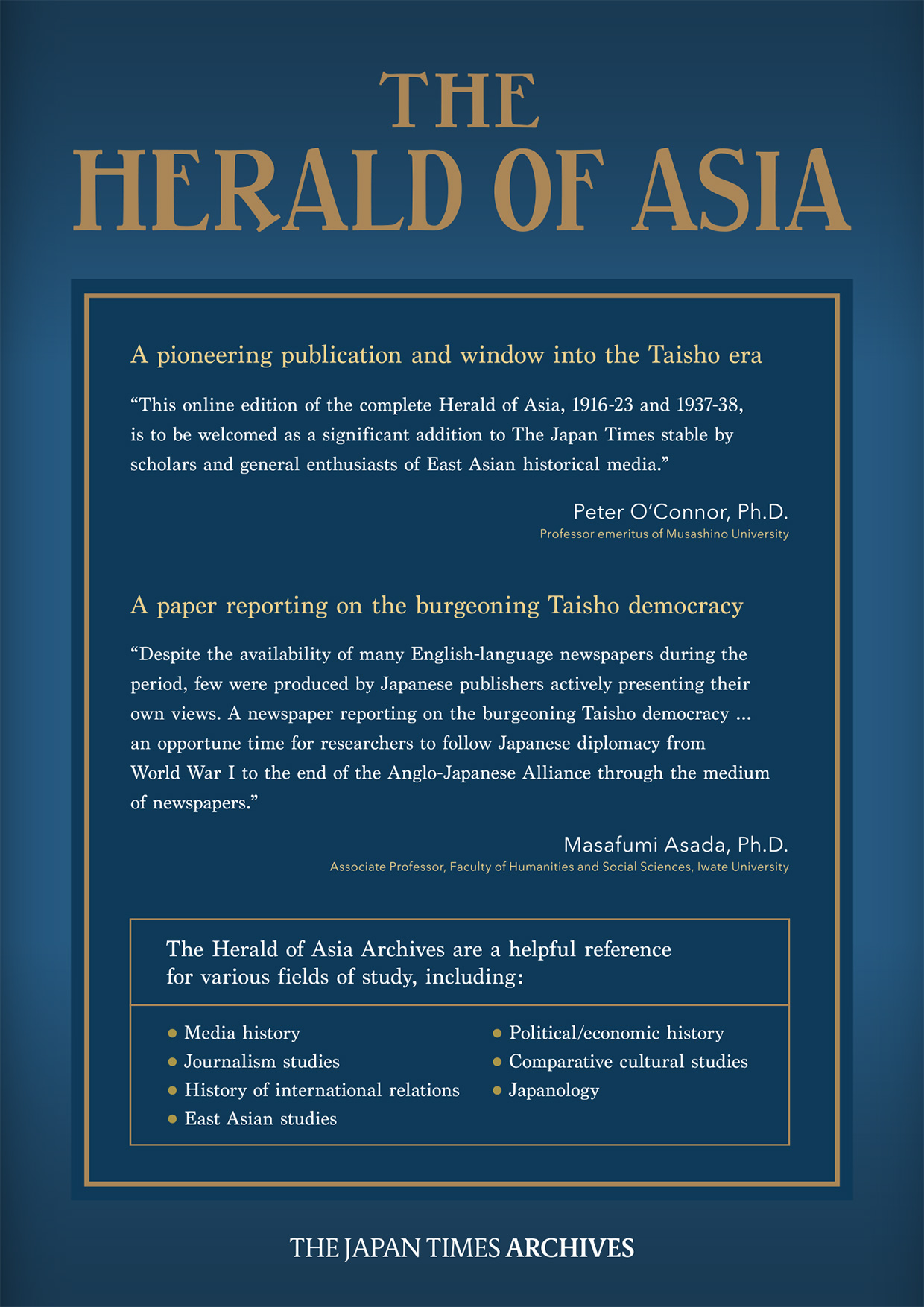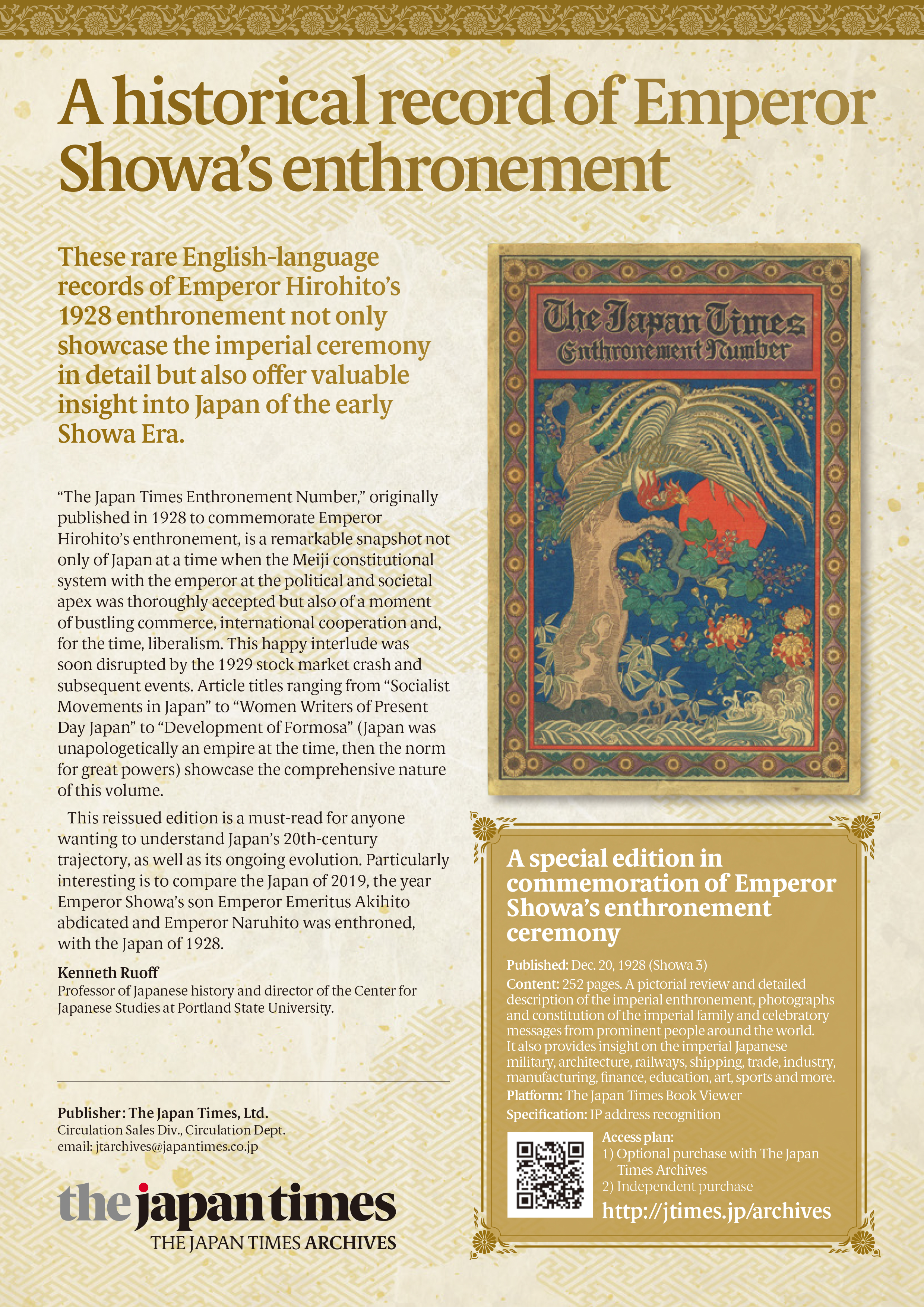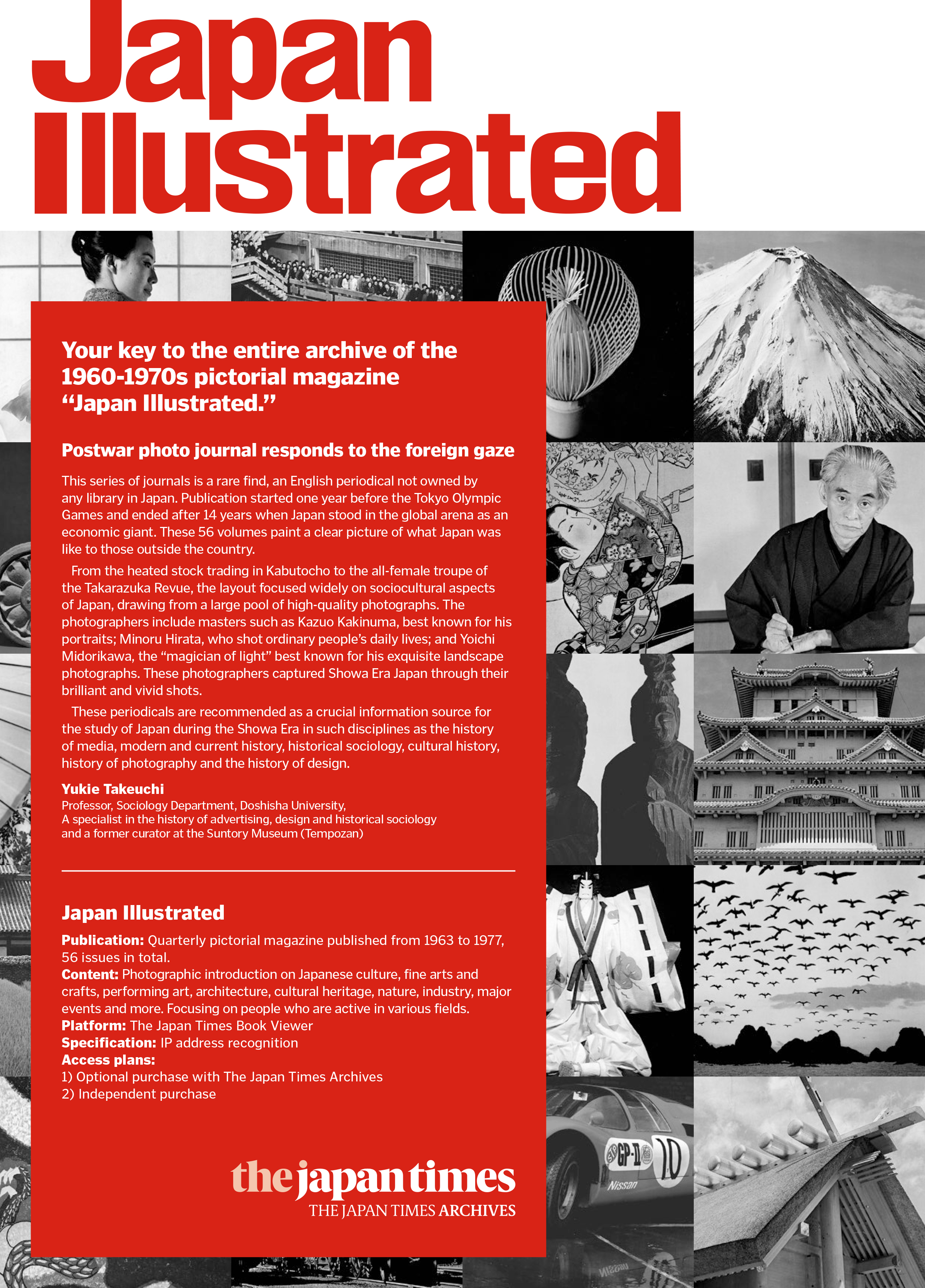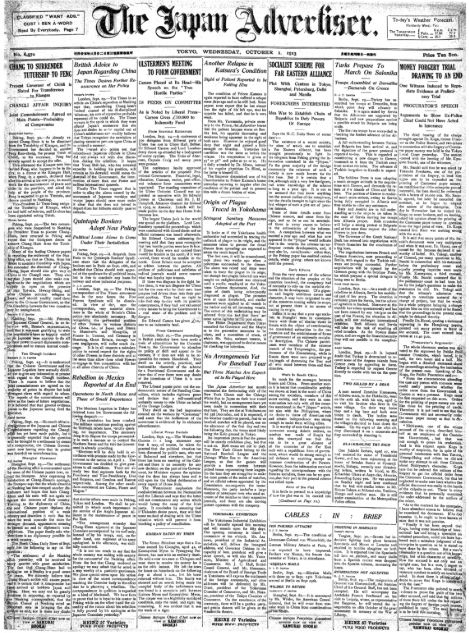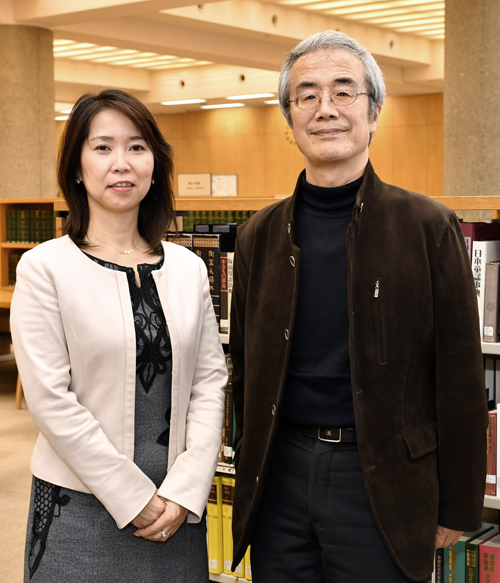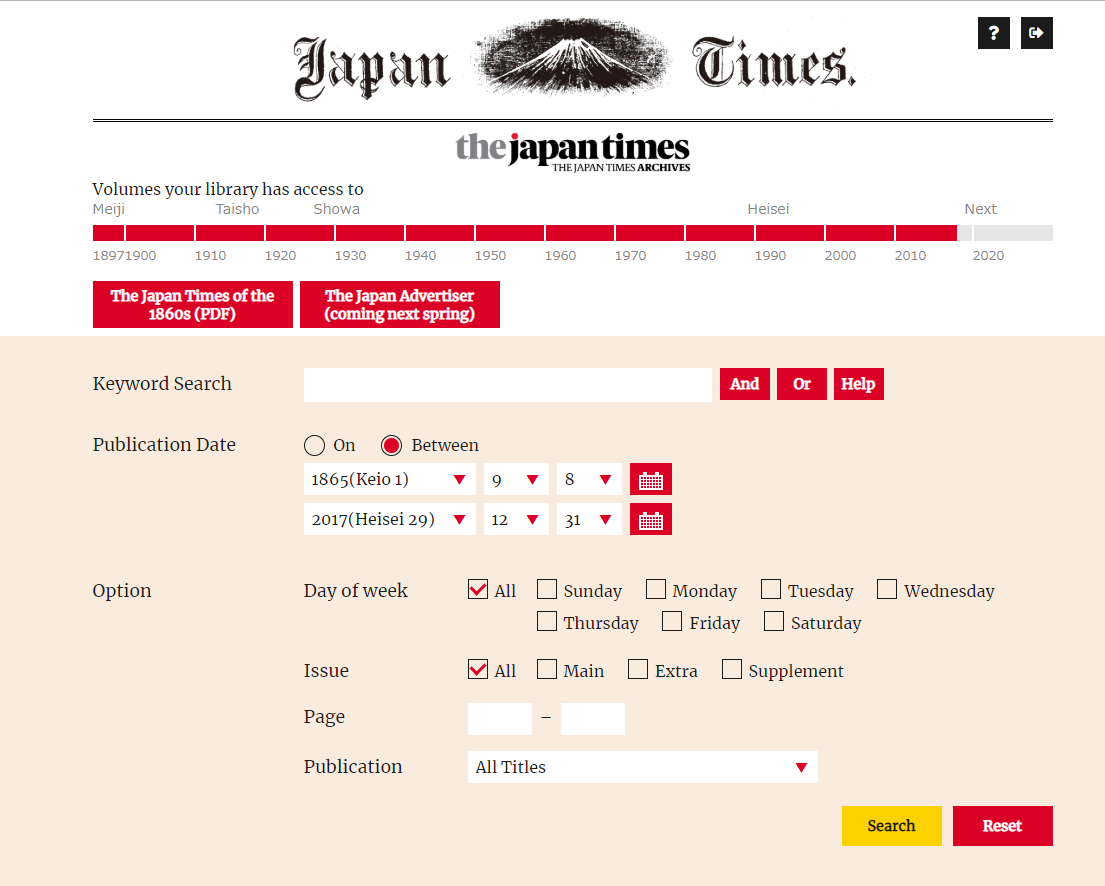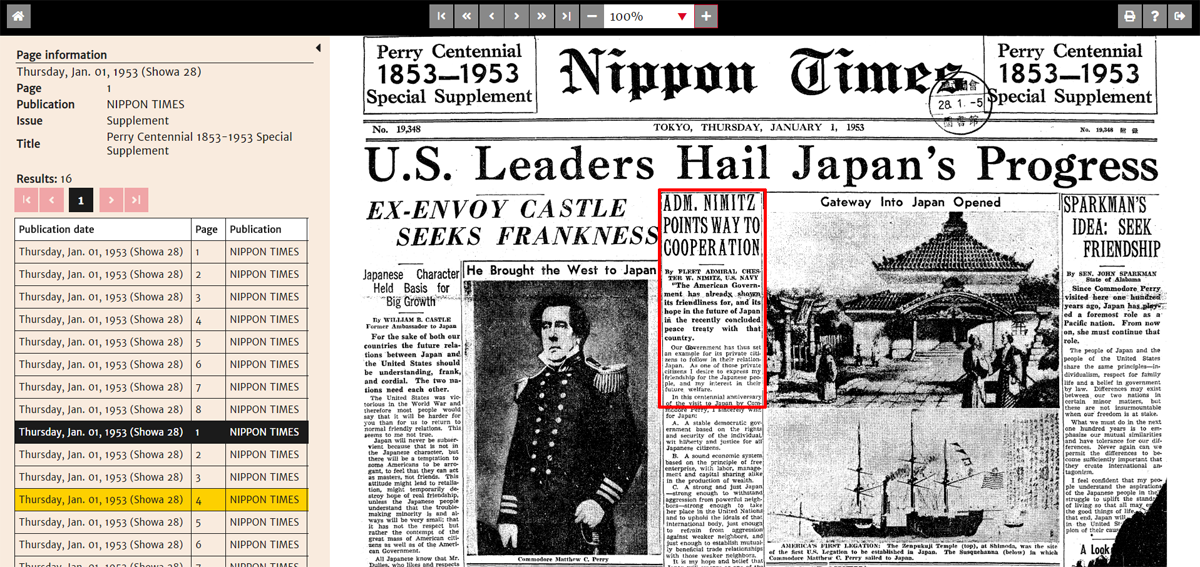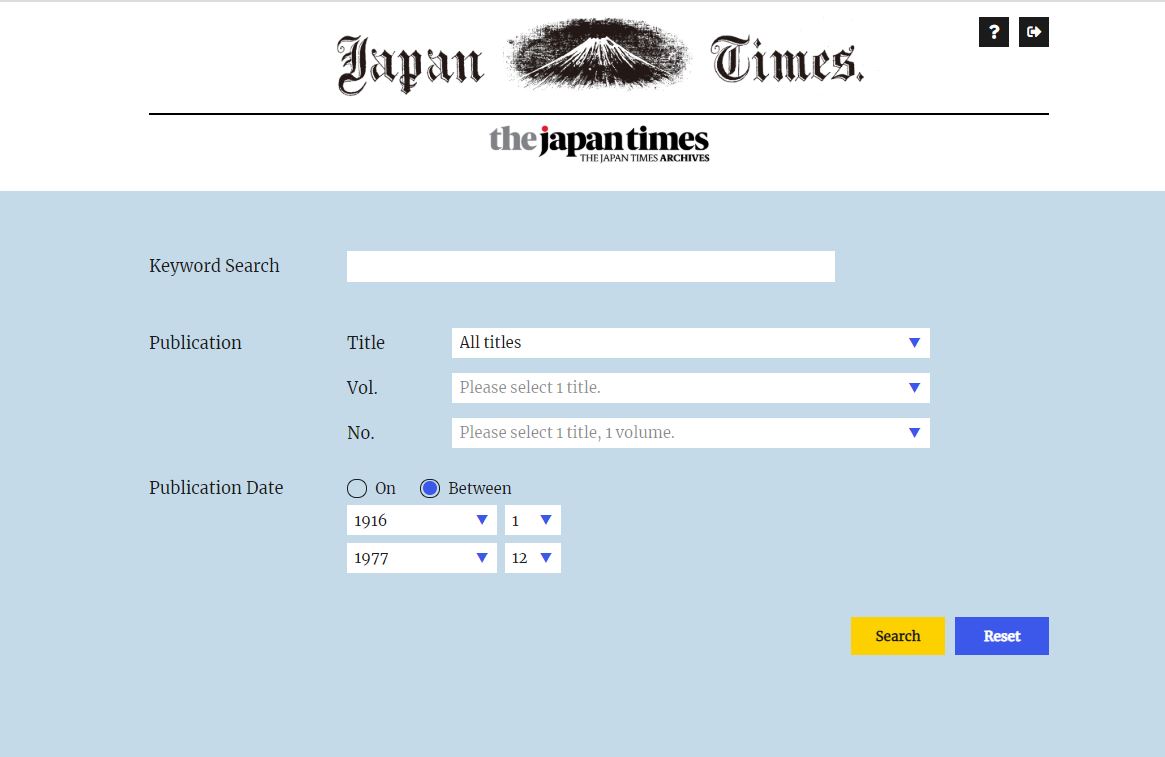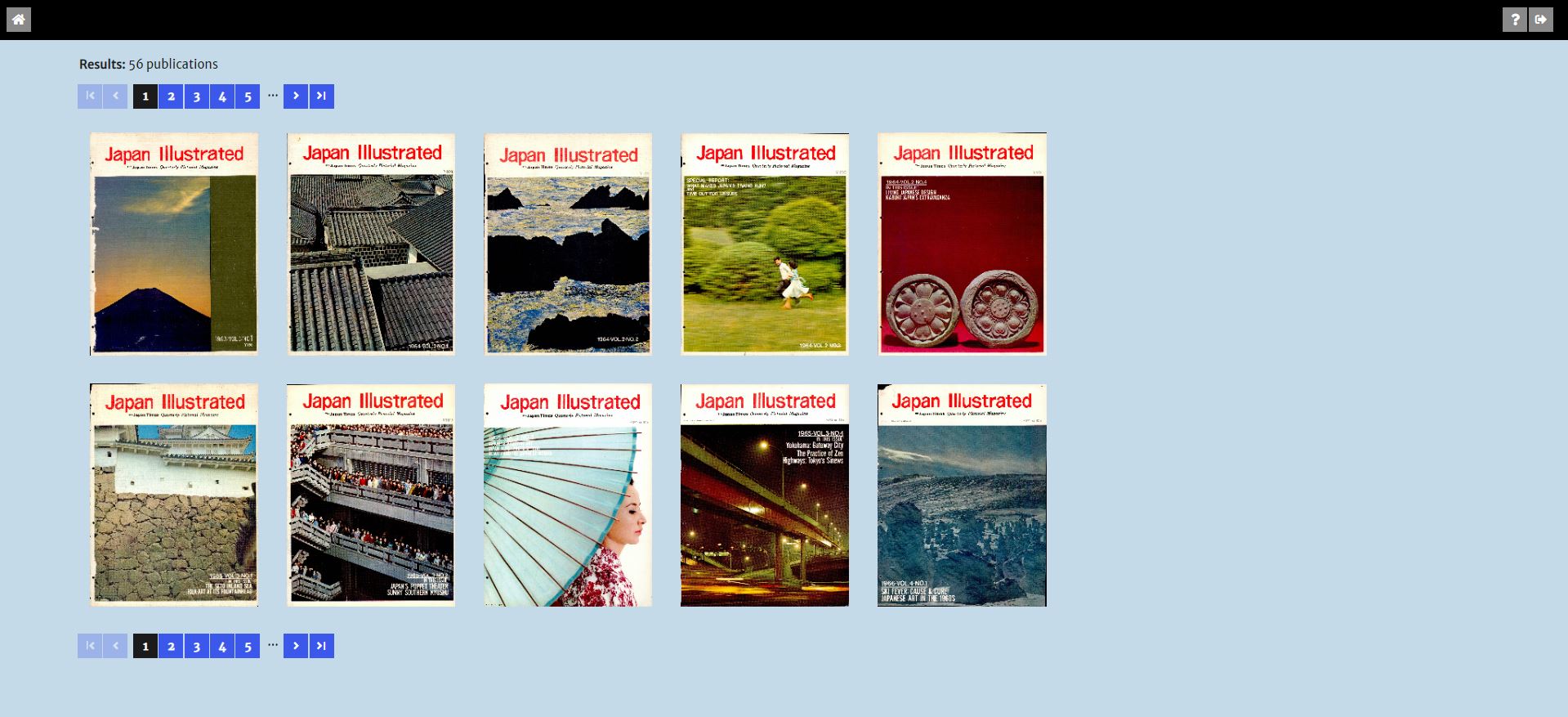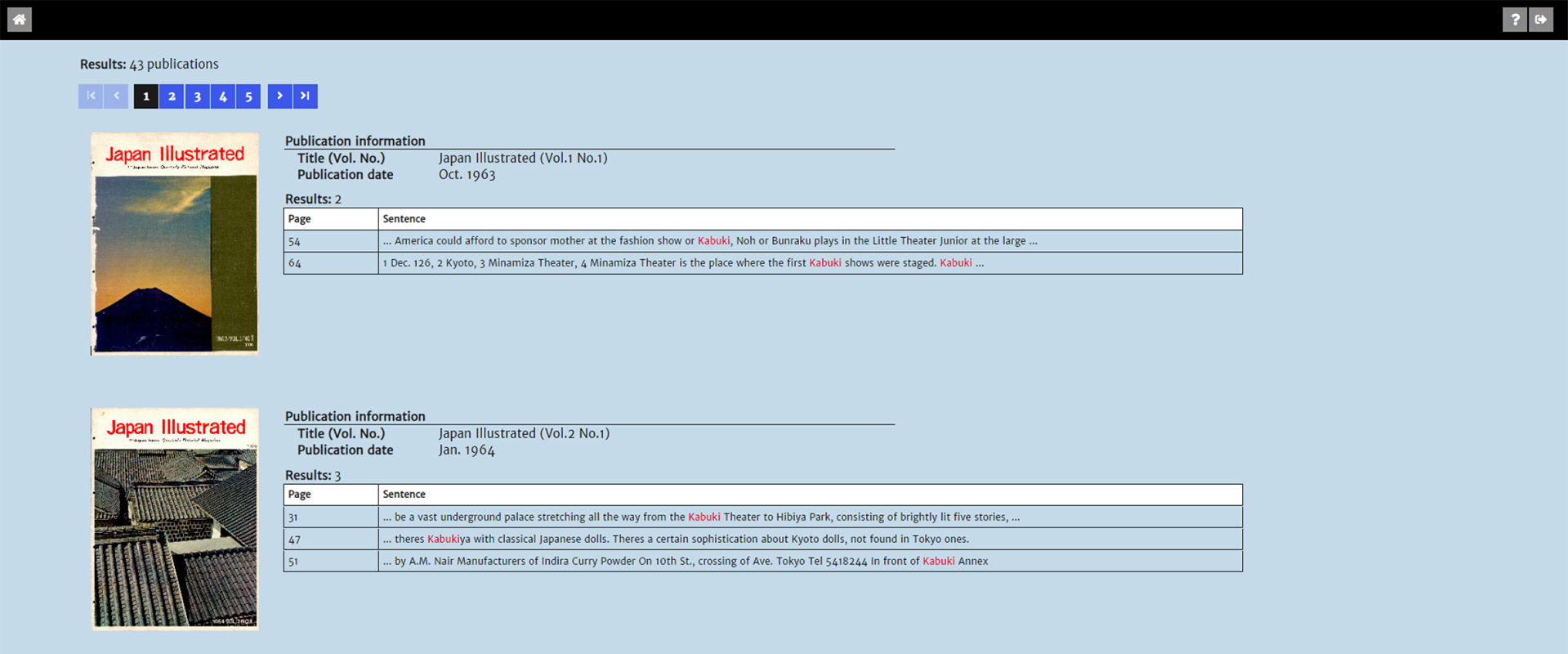The Japan Times Archives
- Search and view data from 1897 up until a year ago
- Contains an array of valuable content from a unique angle as an English-language newspaper in Japan.
- Encompasses articles, photos and advertisements, which can be used for PR material.
OUTLINE OF THE JAPAN TIMES ARCHIVES
The Japan Times Archives enables users to easily search for about 600,000 pages of articles, ranging from the paper’s inaugural issue in March 1897 to those published the previous year.
The Japan Times continues to report with perspectives absent from Japanese-language papers, as well as clear, contextual explanations for non-Japanese readers.
The database offers valuable historical content covering domestic and international politics, economy, culture, TV schedules, advertisements, weather forecasts and other useful topics.
The Japan Times Archives is used in universities, schools, libraries and research institutes in Japan and abroad.
The archives are useful for researchers interested in the subjects listed below:
- East Asia's geopolitics, history
- Japanese politics
- Japanology
- Japanese, military, media and journalism history
- Research on newspapers
We also sell archive content to companies and organizations.
Our content is an impactful addition to any PR materials and events celebrating your organizations'anniversaries. We are also able to provide proposals for packages on international PR strategies.

Serving as the nation’s premier English-language news source since 1897,
The Japan Times is proud of its history
The greatest foreign policy challenge facing the Japanese government in the Meiji Era (1868–1912) was rewriting the unequal treaties forced upon the country as it opened up to the world during the shogunate’s twilight years.
Among the concessions imposed on Japan by those treaties were the extraterritorial foreign settlements established in seven cities across the country. Friction between the members of those settlements and the native residents of neighboring communities soon became a major headache for the nation.
There was at least one organization eager to address such friction. Ahead of the 1899 return of the foreign settlements to Japanese control, The Japan Times was launched on March 22, 1897, with the goal of clearing up misunderstandings between Japanese and foreigners, conveying the true state of Japanese affairs to nonnative readers and advancing cross-cultural understanding ― a role perfect for Japan’s first English-language newspaper run and edited by Japanese. The Japan Times was initially helmed by Sueji Yamada, a distant relative of Yukichi Fukuzawa, the founder of Keio University, and employed as its editor-in-chief Motosada Zumoto, who had served as a secretary to the celebrated Meiji Era statesman Hirobumi Ito.
From 1918 to 1940, The Japan Times absorbed other English-language newspapers in Japan, bringing together the country’s English dailies. Thereafter, in each chapter of Japan’s postwar history ― from the Occupation, through the miraculous economic recovery and on to today ― The Japan Times continued to report on domestic affairs and global events, a mission that it has proudly fulfilled as Japan’s sole independent English-language newspaper.
